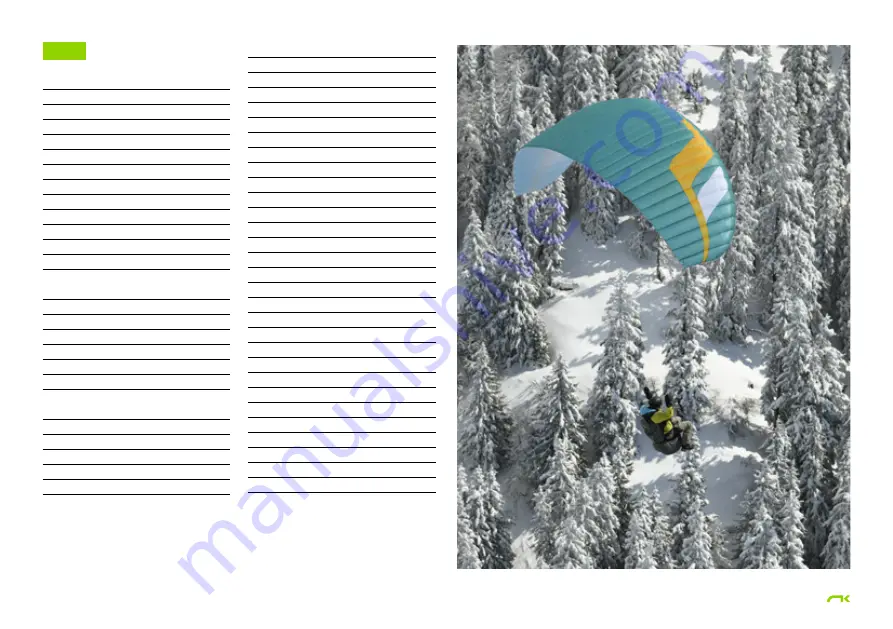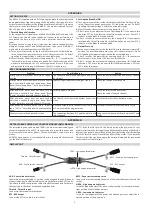
3
INDEX
WELCOME 2
USER MANUAL
2
1.1 WHO IS IT DESIGNED FOR?
4
1.2 CERTIFICATION
4
1.3 IN-FLIGHT BEHAVIOR
5
1.4 CONSTRUCTION, MATERIALS
5
1.5 ELEMENTS, COMPONENTS
6
2. UNPACKING AND ASSEMBLY
7
2.1 CHOOSING THE RIGHT LOCATION
7
2.2 PROCEDURE
7
2.3 CONNECTING THE HARNESS
7
2.4 HARNESS TYPE
7
2.5 SPEED-BAR
7
2.6 INSPECTION AND WING INFLATION ON
THE GROUND
9
2.7 ADJUSTING THE BRAKES
9
3. THE FIRST FLIGHT
9
3.1 CHOOSING THE RIGHT LOCATION
9
3.2 PREPARATION
9
3.3 FLIGHT PLAN
9
3.4 PRE-FLIGHT CHECK
10
3.5 WING INFLATION, CONTROL AND
TAKEOFF 10
3.6 LANDING
10
3.7 PACKING
10
4. IN FLIGHT
10
4.1 FLYING IN TURBULENCE
11
4.2 POSSIBLE CONFIGURATIONS
11
4.3 ACCELERATED FLIGHT
13
4.4 FLYING WITHOUT BRAKE LINES
13
4.5 LINE KNOT(S) IN FLIGHT
13
5. LOSING ALTITUDE
13
5.1 BIG EARS
13
5.2 B-LINE STALL
14
5.3 SPIRAL DIVE
14
5.4 SLOW DESCENT TECHNIQUE 14
6. SPECIAL METHODS 15
6.1 TOWING 15
6.2 ACROBATIC FLIGHT 15
7. CARE AND MAINTENANCE 15
7.1 MAINTENANCE 15
7.2 STORAGE 16
7.3 CHECKS AND INSPECTIONS 16
7.4 REPAIRS 16
8. SAFETY AND RESPONSIBILITY 16
9. GUARANTEE 17
10. ANNEXES
18
10.1 TECHNICAL DATA
19
10.2 MATERIALS DESCRIPTION
20
10.3 RISER PLAN
21
10.4 LINE PLAN
22
10.5 LINE LENGTHS KODE P SIZE 16
10.6 LINE LENGTHS KODE P SIZE 18
10.7 LINE LENGTHS KODE P SIZE 20
10.8 LINE LENGTHS KODE P SIZE 22
10.9 LINE LENGTHS KODE P SIZE 24
10.10 LINE LENGTHS KODE P SIZE 26
10.11 CERTIFICATION




































